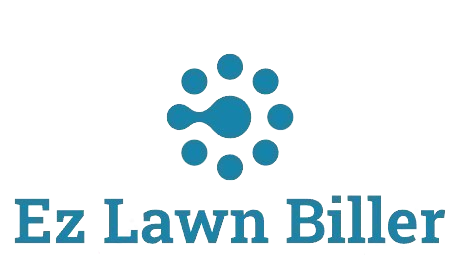Optimize Routes: Best Practices for Lawn Care Pros
In the competitive landscape of lawn care services, efficient route optimization is essential for maximizing productivity and enhancing customer satisfaction. As lawn care professionals, managing time effectively can lead to considerable savings in fuel costs and labor hours, while ensuring timely service delivery to clients. This blog post will delve into best practices for optimizing routes in the lawn care industry, offering actionable insights, strategies, and tools that can elevate your business operations.
Route optimization is more than just a buzzword; it is a critical component of operational efficiency. In today’s fast-paced world, clients expect prompt and reliable service, and effective route planning can make all the difference. Throughout this article, we will explore various strategies to streamline your lawn care routes, the benefits of utilizing technology, and the importance of ongoing evaluation and adjustment in your routing processes.
Understanding the Importance of Route Optimization
Optimizing routes is vital for lawn care professionals for several reasons. First and foremost, efficient routing helps reduce operational costs. Fuel prices can be volatile, and minimizing travel distances directly translates to lower gas expenses. Furthermore, reducing travel time enables lawn care technicians to complete more jobs within a day, increasing overall revenue potential.
Additionally, route optimization enhances customer satisfaction. When lawn care providers are punctual and reliable, clients are more likely to remain loyal and recommend services to others. According to a study by the American Society of Landscape Architects, 87% of consumers value timely service, making efficiency a top priority in this industry.
Utilizing Technology for Route Planning
One of the most effective ways to optimize routes is by leveraging technology. Modern lawn service software, such as the EZ Lawn Biller platform, offers features specifically designed to enhance route efficiency. With its automated scheduling and mapping capabilities, lawn care professionals can quickly determine the most efficient routes based on client locations, traffic patterns, and service times.
Moreover, lawn service apps provide real-time updates and allow technicians to access client information on the go. This accessibility ensures that any last-minute changes can be accommodated without disrupting the entire schedule. By integrating technology into your route planning process, you not only save time but also enhance communication with clients regarding arrival times and updates on service completion.
Best Practices for Route Optimization
While technology plays a crucial role, implementing best practices in your routing process is equally important. Start by categorizing your clients based on geographical zones. Grouping clients in close proximity helps create more efficient routes and reduces travel time.
Another effective strategy is to schedule recurring appointments for regular clients at specific times. This allows you to anticipate your daily workload and plan your routes accordingly. For instance, if you have a client who requires weekly mowing every Tuesday, consistently scheduling this service at the same time can create a reliable routine that optimizes your schedule.
Continuously Evaluate and Adjust Your Routes
Optimization is not a one-time task; it requires ongoing evaluation and adjustments. Regularly assessing your routes can reveal patterns in travel times and areas for improvement. Utilize analytics provided by lawn service software to track performance metrics, such as average job completion times, distance traveled, and fuel consumption.
By analyzing this data, you can identify bottlenecks or inefficiencies in your routing process and make necessary adjustments. For example, if you notice that certain areas consistently take longer to service, it might be worthwhile to reevaluate the frequency of visits or even consider adjusting your route to better align with traffic patterns.
Implementing Client Feedback in Route Optimization
Engaging with your clients for feedback is another powerful tool in the route optimization process. Regularly solicit input from clients regarding their preferred service times and any changes in their scheduling needs. By understanding your clients’ preferences, you can adjust your routes accordingly, further enhancing customer satisfaction.
Additionally, timely communication regarding any schedule changes fosters trust and transparency in your service. Automated notifications through your lawn company app can keep clients informed about expected arrival times and any delays, ensuring they feel valued and respected.
The Role of Training and Development
To maximize the benefits of route optimization, investing in staff training is crucial. Ensure that your employees are equipped with the necessary skills to use the lawn service app effectively. Training sessions can cover topics such as navigating the software, understanding route planning, and utilizing customer management features.
Furthermore, encourage your team to share insights on route challenges they encounter. This collaborative approach can lead to innovative solutions and further optimize your overall operations. Remember, your employees are on the front lines and can provide valuable feedback on improving routing efficiency.
Adopting Green Practices Through Efficient Routing
In addition to operational benefits, optimized routes contribute to environmental sustainability. Reducing travel distances lowers carbon emissions, aligning your lawn care business with eco-friendly practices. Many clients today prioritize sustainability, and demonstrating your commitment to green initiatives can enhance your business reputation.
By incorporating route optimization strategies, you not only improve your bottom line but also play a part in creating a more sustainable future. As clients become more environmentally conscious, aligning your services with their values can serve as a unique selling point in a competitive market.
Conclusion
Optimizing routes is a fundamental practice for lawn care professionals looking to enhance efficiency, save costs, and elevate customer satisfaction. Utilizing technology, implementing best practices, and continuously evaluating your processes can lead to significant improvements in operations.
As you consider the strategies discussed in this blog post, remember that the key to successful route optimization lies in adaptability and responsiveness to client needs. By prioritizing efficient routing, you not only streamline your operations but also build a loyal customer base and contribute to the growth of your lawn care business.
Take the first step towards more efficient routing today. Explore the capabilities of [EZ Lawn Biller](https://ezlawnbiller.com/) and see how this innovative lawn billing software can revolutionize your operations and help your business flourish.




